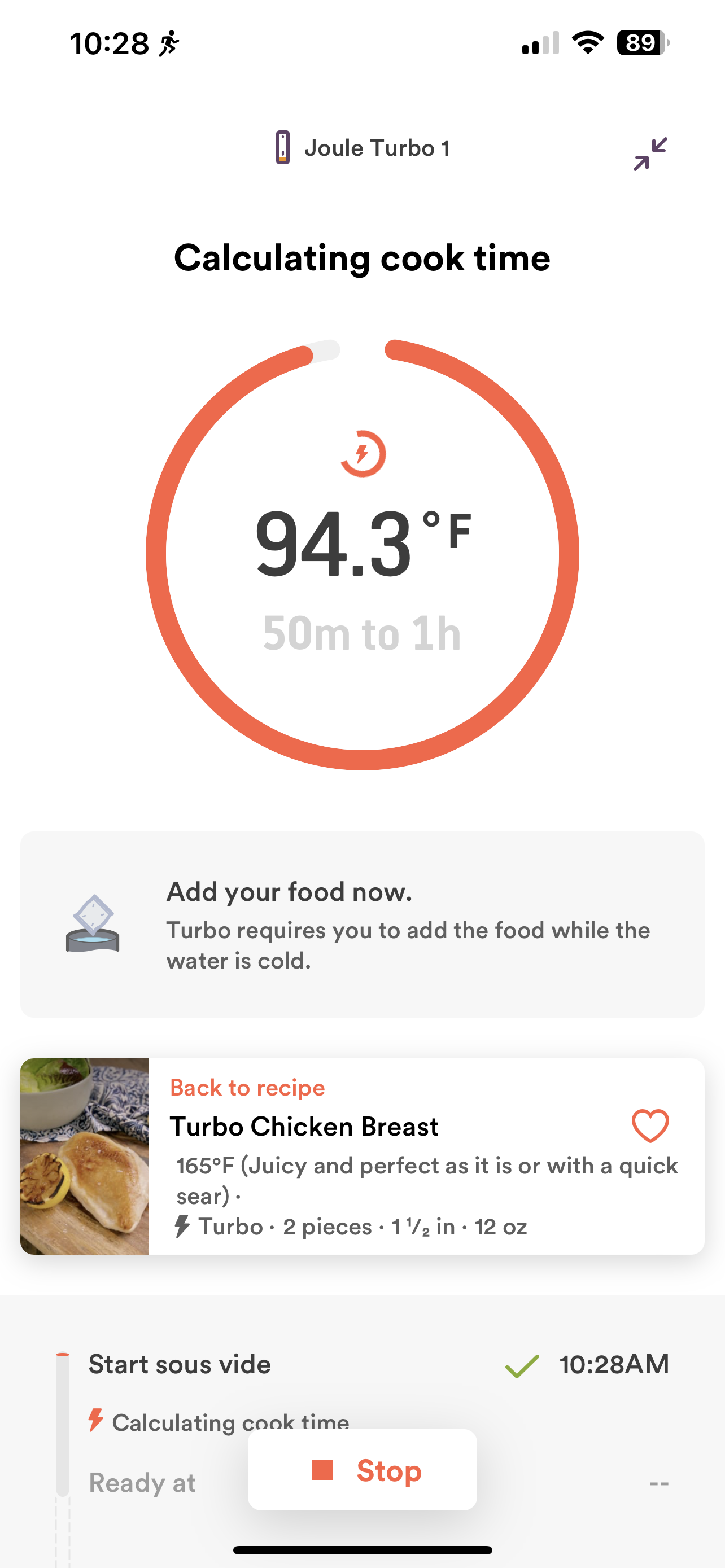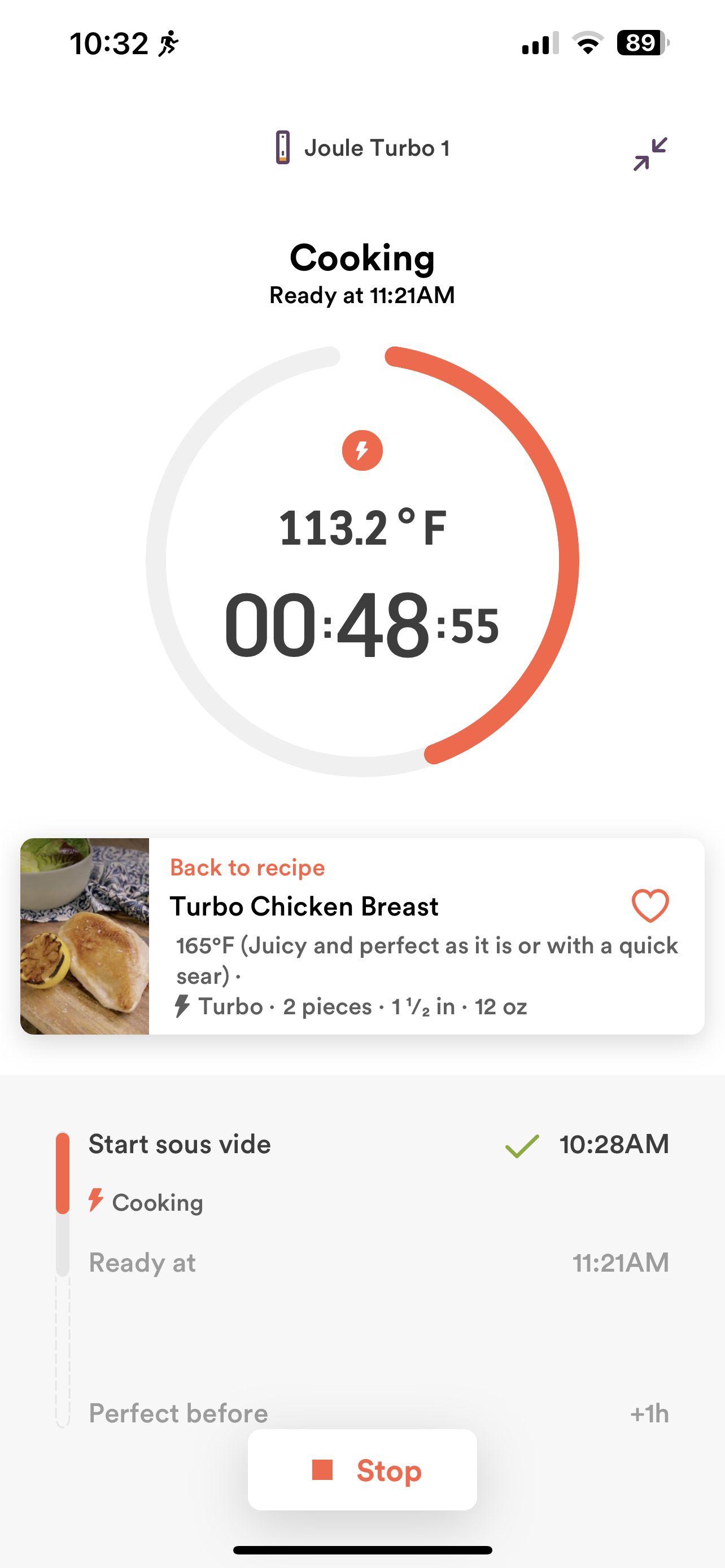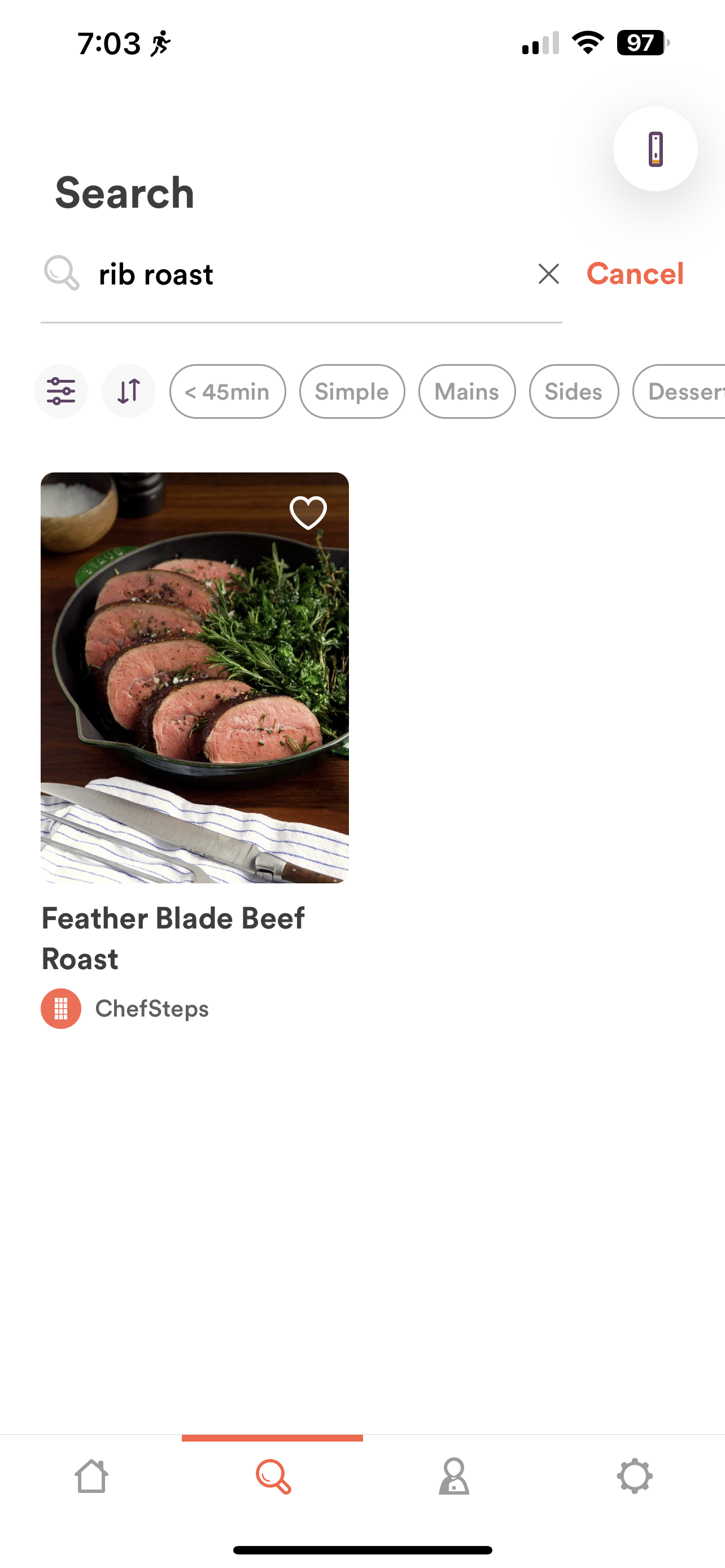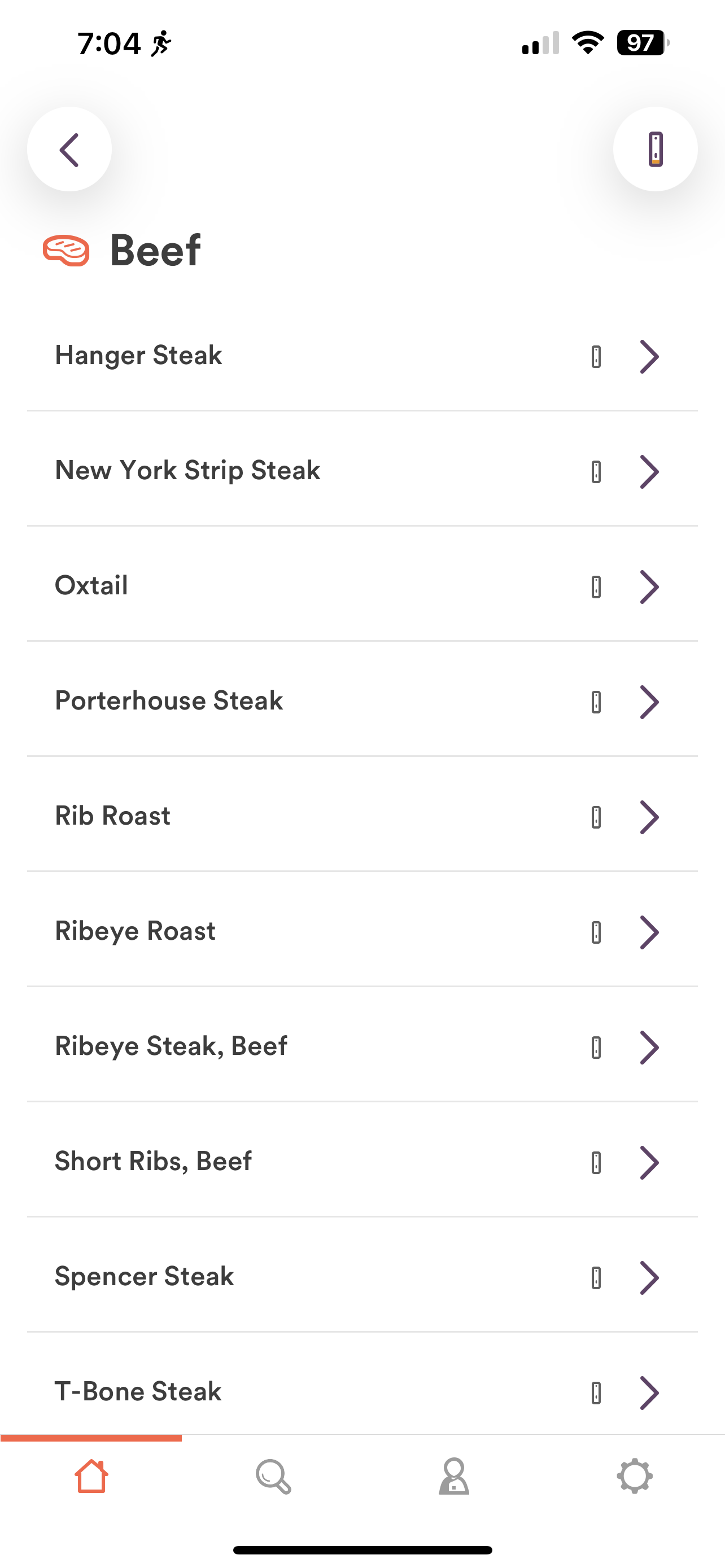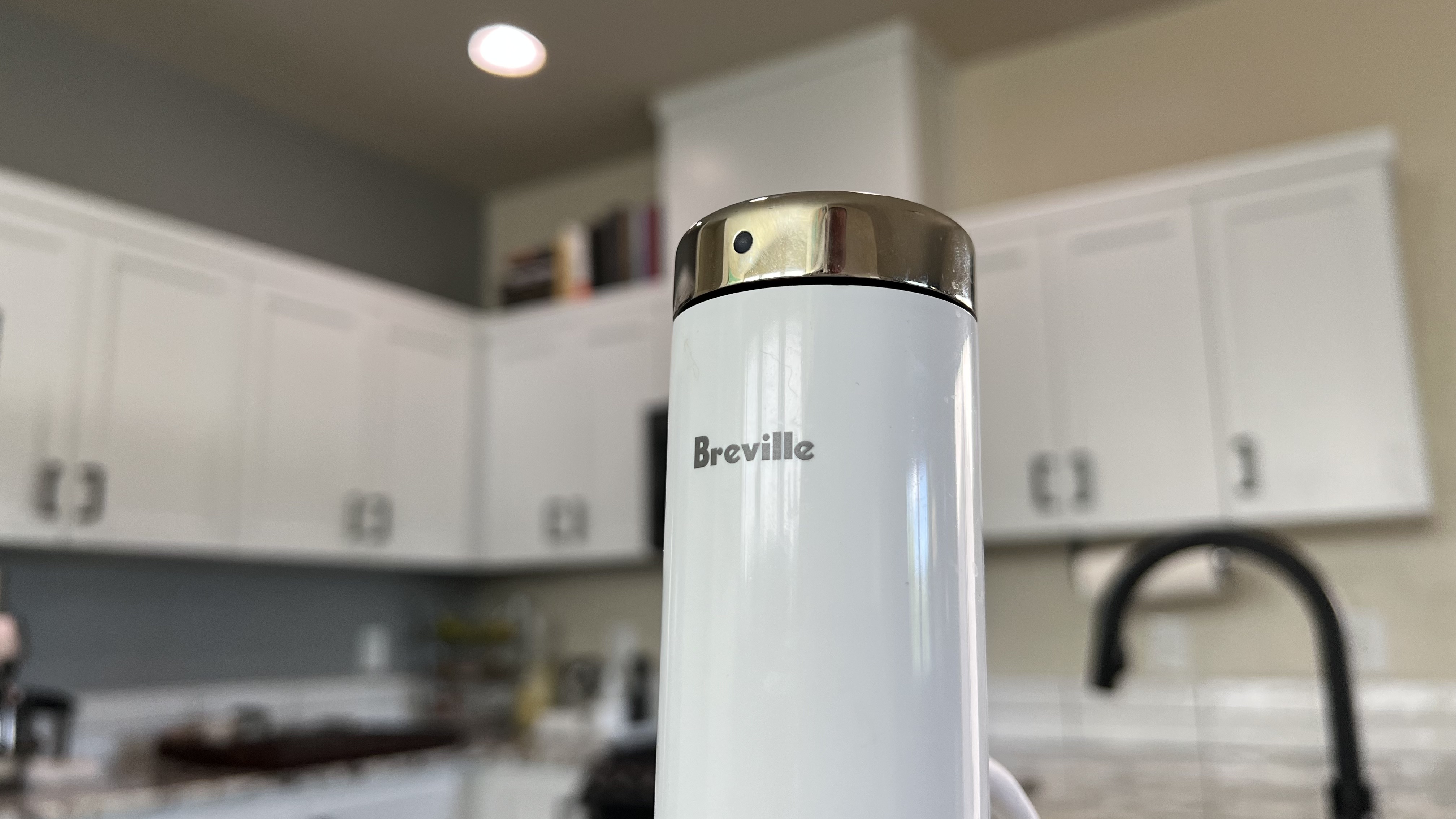
We love sous vide cooking here at The Manual. So long as you pay attention to the core principles of time and temperature, your results with sous vide will be incredible. In acquiring ChefSteps a few years ago, Breville also took ownership of its groundbreaking, class-leading sous vide machine, Joule. Now Breville thinks it’s cracked the at-home sous vide code with Joule Turbo, which uses a new algorithm to cook food up to two times faster than traditional sous vide.
Is that true? Can math cook food faster? Luckily, I have the now-retired Joule (okay, I have three, leave me alone) to compare the Joule Turbo to, so we’re about to find out.
(A “sous vide machine” is technically a thermal immersion circulator, but our research tells us everyone calls it sous vide machine, so we’ll use that term. Apologies in advance, fellow food nerds. I stand in solidarity with you.)
What’s new with Breville Joule Turbo?
The Joule Turbo is longer than its predecessor but stylistically the same. Still a long white cylinder, Breville re-introduced the metal cap and base Joule eschewed long ago. Aside from being longer, the Joule Turbo has an orange ring on the crown, which is Breville’s connected-cooking-tech branding color and ChefSteps’s color scheme. It’s also reminiscent of Chevy’s racing orange color that it used on muscle cars so long ago. Fitting for something branded “Turbo.”
For some reason, the Joule Turbo cord is slightly shorter than the older Joule, but it feels sturdier. Breville slapped its name on the Joule Turbo, too. There’s also a designation for how far up the water line should fall on the Joule Turbo, which is handy.
Here’s what Breville has to say about Joule Turbo:
The Joule Turbo has the same motor, magnetic foot, and connected features as the original Joule, but also includes new features such as Joule Turbo which cooks food in half the time of traditional sous vide, Primetime, new Turbo recipes, and sous vide recipes all on the new Breville Joule app.
So what’s new? An algorithm. And the price. Joule Turbo is $249.95, a solid $50 more than Joule was.
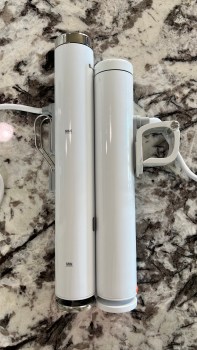
Joule Turbo performance
Joule Turbo is sleek and gorgeous, but how does it perform? There are a few things to note:
- Only certain things cook faster. Yes, Joule Turbo will cook some things “up to two times” faster, but it’s relegated to smaller items like steak cuts and chicken breast. You won’t be able to cook everything faster. My 24-hour sous vide pulled pork was still incredible when cooked with Joule Turbo, but it wasn’t “turbo.”
- Water evaporation seems more significant. Even with “regular” (read: not Turbo) cooks, evaporation seemed more significant with Joule Turbo. Invest in a cover for your water bath vessel.
- Turbo cooking is incredible. Let’s be honest: sometimes you want a perfect steak but don’t want to invest the time in long sous vide cooking. Joule Turbo’s features cut right through that, and the results are just as great as I have been getting with “regular” sous vide cooking.
- Turbo cooking is fussy. When you cook a food item with the “Turbo” setting, you must enter more data than traditional sous vide. The Joule app asks for the thickness, weight, and quantity of items being cooked. All of this adjusts the cooking time. Previously, you just told the Joule app how thick your food was, and it kept the bath at a constant temperature. Joule Turbo is nerdier than its cool forerunner.
Joule Turbo: Is “turbo” really a thing?
As long as sous vide cooking has been in use, the mantra has been “the wait is worth it.” And that’s been true. Food cooked via sous vide is incredible, and it’s hard to screw things up. Let the sous vide machine heat and circulate the water, submerge the food, and take the bag out at the right time. Pretty simple.
Joule Turbo turns the most frustrating part of sous vide cooking on its ear: the waiting game. Breville only offers that it created new algorithms to manage water temperature better for some sous vide cooking projects. Whatever the team there has done with numbers and graphs and whatever else they used works well – in some scenarios.
When cooking food with the “Turbo” feature, the heat pump seems to flick intermittently rather than stay on throughout the cook. It can give the impression your Joule Turbo is faltering, but it’s not. The circulator is still operating; the Joule Turbo just seems to heat the water differently than the Joule did.
It’s also worth noting that you must enter a lot of info when cooking “Turbo” – all of which changes the cook time. I had to measure and weigh a chicken breast cooked via “Turbo” then watch the time increase incrementally as I input data. The app even asked how many breasts I was cooking. It’s logical, as you’re feeding the algorithm important parameters to manage the overall cooking time better, but my large chicken breast didn’t cook in half the time as a non-Turbo cook. I shaved about 20 minutes off, but it took about an hour.
The results are worth it; just don’t fool yourself that the Joule Turbo makes quick work of every sous vide cooking project every time. (To be fair, I could have split the breast and reduced my cook time even more if I cared to.)
Joule Turbo software: The Breville Joule app is not great
Joule Turbo requires an app to control it, as there is no way to control the temperature or cook time on the device itself. The app is where you select what you’d like to cook and how you’d like it cooked. The app then sends that info to the Joule Turbo and monitors things as food cooks in its warm little bath.
The app needs some help, however. Navigating the app can be difficult, and simple tasks like backing out of the popups for monitoring a cook can take up to six steps. It’s a beautiful app visually – it just needs some tweaks. As we tested the app, interacting with it did not feel intuitive.
Unfortunately, cleverly designed hardware is let down by overly complicated software with Joule Turbo. The software team should take a cue from its hardware team: less is more.
ChefSteps’s original Joule app didn’t have the same problems. I’m left wondering why Breville didn’t recreate or “take over” that app. I mean, they own it, right?
This leads me to another annoyance: the Breville Joule app doesn’t sync with the older Joule sous vide machine. If I want to cook two things simultaneously (one with Turbo, one with the legacy Joule), I must engage two sous vide machines in two unique apps – even though they are essentially the same device. This is silly and feels like forced obsolescence. I would rather see Breville embrace the community it bought its way into rather than force them to buy a new device and adopt an unnecessarily new-and-not-great platform.
Perhaps the most frustrating is the in-app search. I fell in love with sous vide Prime Rib roast a few years back, and I cook it at least once a year. In the old Joule app, I could search for “Prime Rib” or “rib roast,” and it would surface. Neither search term works in the Breville Joule app, but “rib roast” is buried in the “Cook Guides” section. This is simply poor execution by Breville; a search function not searching the entire app is inexcusable.
Joule Turbo: Should you buy it?
$250 is nothing to sneeze at for a thermal immersion circulator (take that, normies!), but the Joule Turbo is 100% worth it.
In some instances, Joule Turbo is faster than traditional methods of cooking. It took me longer to sear a steak and roast it in the oven than to sear a steak and sous vide it with Joule Turbo. And the sous vide steak was better. And I worry less about the results with sous vide.
Sous vide is just more straightforward. I don’t have to remember the new chicken-poaching method I saw two weeks ago on YouTube that promised me great results because I want to make chicken salad. The results with sous vide are great, and the methodology is always sound. All the fussy methods people invent are ultimately trying to mimic what sous vide can do. Skip all the nonsense and go straight to sous vide, I say.
While I harangued about cooking a chicken breast via “Turbo,” it’s worth noting that it did shave time off the overall cook, and the results were incredible. I’m just not sure asking home cooks to become junior lab rat scientists and weigh/measure the food they want to cook is an intelligent move. (And if Breville’s excuse is that users can manually enter time and temperature – which is true – that’s ignorant to how and why Joule is so popular.)
The app needs quite a bit of work. Breviile can fix issues in a software update and should prioritize doing so. There’s nothing broken or unusable about the Breville Joule app; it’s simply immature and too complicated.
If anything, Breville’s takeaway should be that it’s not a software company. A bad app is problematic for the Joule Turbo because the app is the user’s only interface with a Joule. Because the app is bad on many levels, users may be dissuaded from sous vide and Joule. I would have never found it if I had not gone on a hunt for a rib roast in the app. That’s just a bad user experience.
Luckily, sous vide is a great user experience. The results are incredible, and Joule is still the best sous vide machine (you win, normies) on the planet.
Should you upgrade your Joule to Joule Turbo?
For a limited time, Breville is offering $75 off an upgrade. You send in the serial number of your Joule, and Breville will send you a code to use at checkout on their site when buying a Joule Turbo.
The weird thing about upgrading is that Breville doesn’t want your original Joule. Breville encourages you to give the old Joule to a friend or family member. Everybody wins.
The $75-off promotion started May 1 and runs through August 31, 2023. And in case you’re wondering, yes, I upgraded. Joule Turbo might not be the quantum leap forward Breville wants you to believe it is – at least not yet – but Turbo shows a lot of promise.

